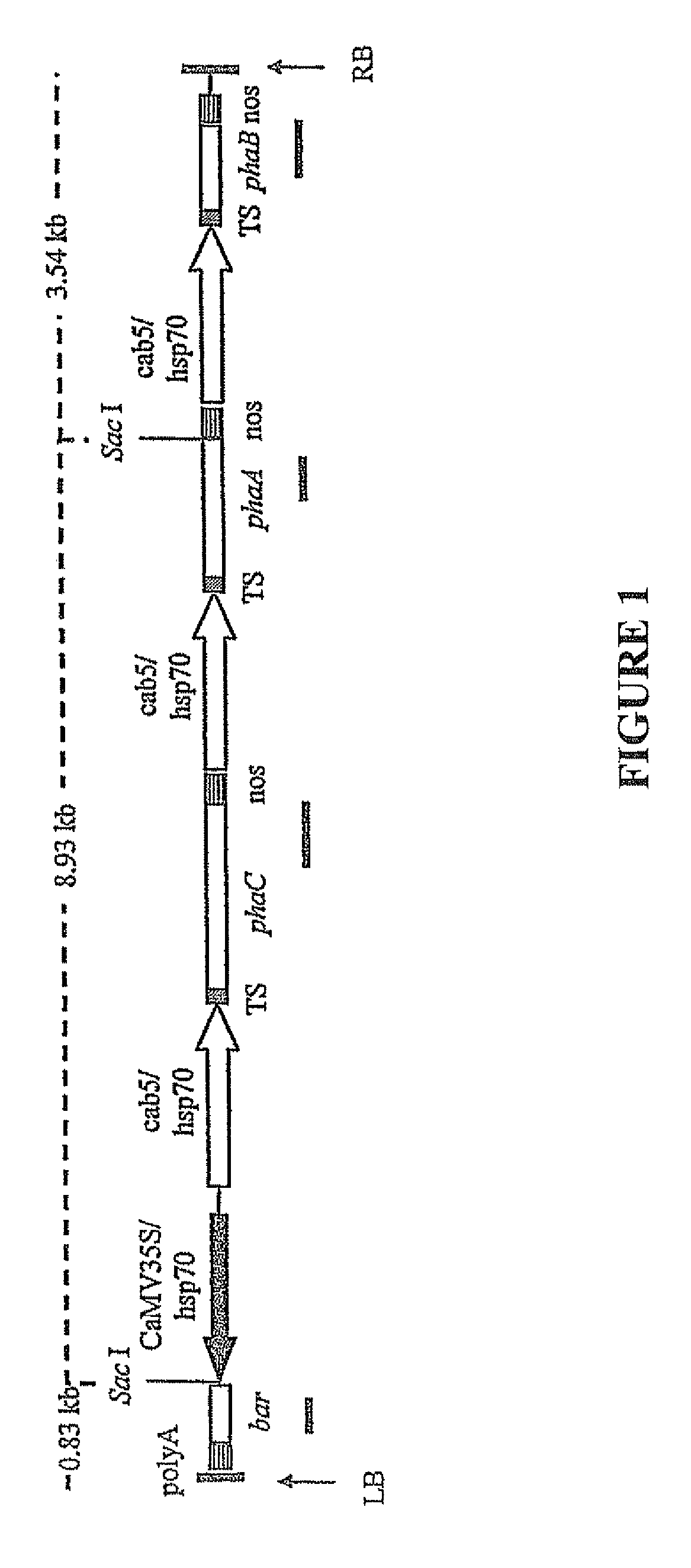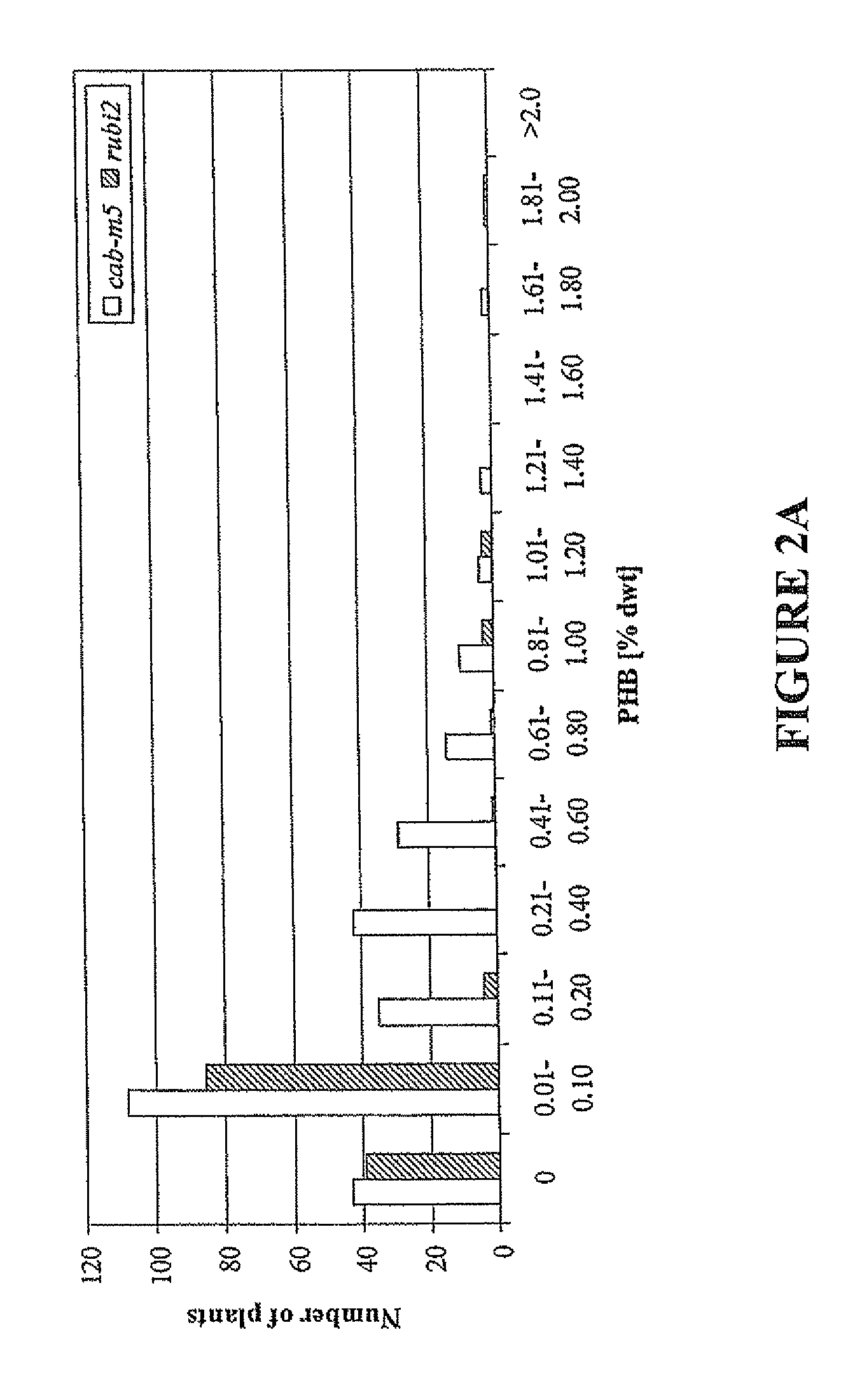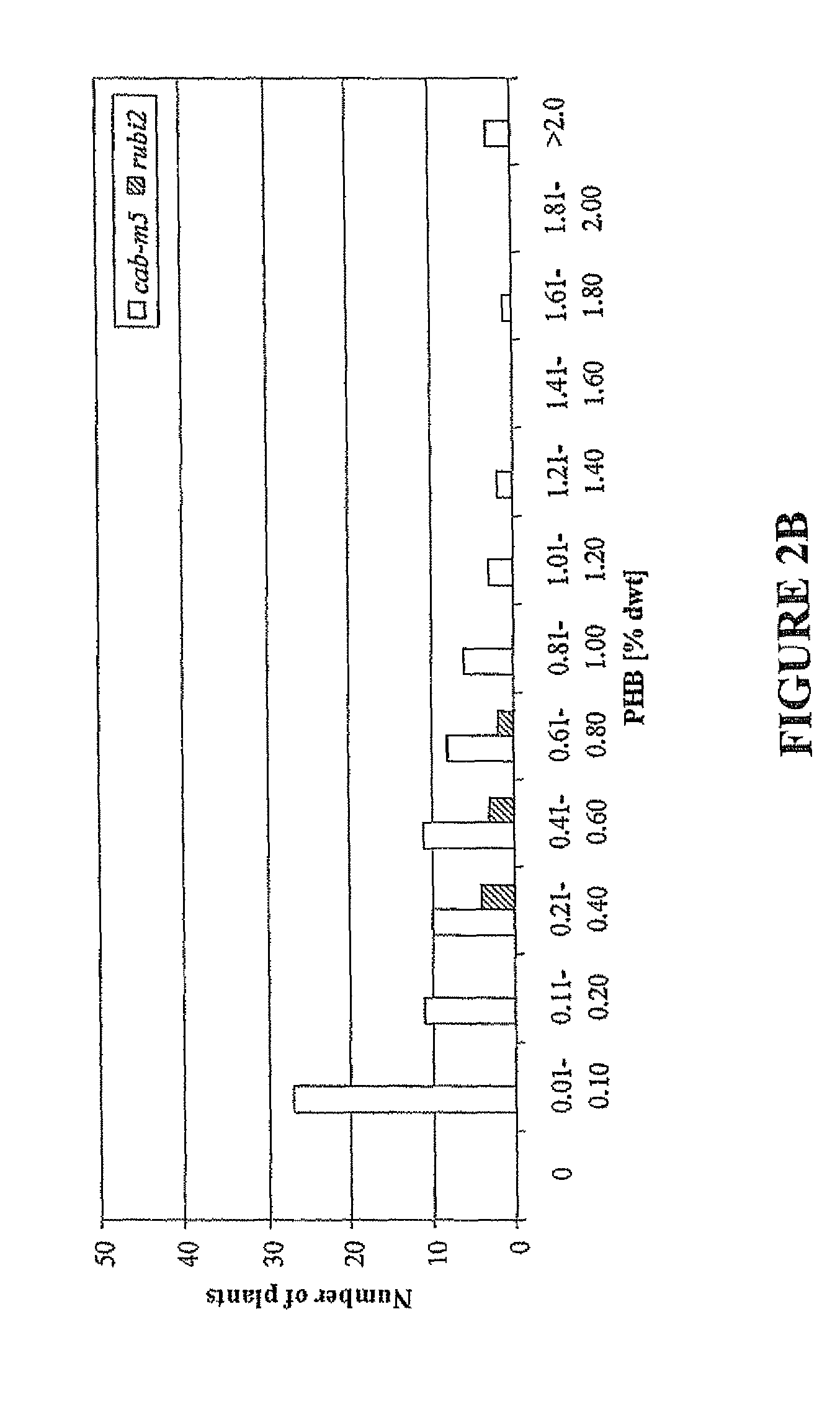Production of polyhydroxybutyrate in switchgrass
a technology of switchgrass and polyhydroxybutyrate, which is applied in the field of transgenic plants, can solve the problems of high cost, inability to engineer plants that do switchgrass does not produce storage products, so as to achieve the effect of increasing the transformation efficiency
- Summary
- Abstract
- Description
- Claims
- Application Information
AI Technical Summary
Benefits of technology
Problems solved by technology
Method used
Image
Examples
example 1
Identification of Switchgrass Genotypes with High Regeneration Potential
[0116]Materials and Methods
[0117]Switchgrass mature caryopses of cv. ‘Alamo’ were sterilized and plated on MS medium for callus induction according to Denchev et al., (1994), Crop Sci. 34:1623-1627). Cultures were grown at 28° C. in the dark and maintained by monthly subcultures. Their embryogenic response was monitored after each subculture. After three months, callus regeneration ability was tested by transferring pre-weighed pieces of callus from each genotype onto MS medium for plant regeneration (Denchev et al., (1994), Crop Sci. 34:1623-1627). Cultures were incubated at 28° C. with a 16 h photoperiod (cool white fluorescent bulbs, 80 μmol / m2 / s) and transferred onto a fresh regeneration medium after 4 weeks.
[0118]Results
[0119]The frequency of callus formation was evaluated four weeks after culture initiation. It varied from 36.4% to 77.3% (Table 1). Approximately 5% of the initial explants formed embryogeni...
example 2
Preparation of Multi-Gene Constructs for PHB Synthesis
[0123]Multi-Gene Constructs.
[0124]pMBXS159. This binary vector contains expression cassettes for the three gene PHB biosynthetic pathway under the control of the rice polyubiquitin 2 (rubi2) promoter (Wang et al., (2000), Plant Sci. 156:201-211). The PHB genes chosen for this construct include a hybrid Pseudomonas oleovorans / Zoogloea ramigera PHA synthase (Huisman et al., (2001), U.S. Pat. No. 6,316,262) and the thiolase and reductase from Raistonia eutropha (Peoples et al., (1989), J. Biol. Chem. 264:15293-15297). Each PHA gene is fused to a plastid targeting sequence encoding the signal peptide of the small subunit of rubisco from pea and the first 24 amino acids of the mature protein (Cashmore, (1983), Genetic Engineering of Plants (Kosuge T, Meredith C P and Hollaender A eds), pp. 29-38, New York, Plenum Press) as described by Kourtz et al., (2005), Plant Biotechnol., 3:435-447. Plasmid pMBXS159 was constructed using the foll...
example 3
Transformation of Switchgrass Cultures with Multi-Gene Constructs for PHB Synthesis and Selection of Transgenic Plants
[0134]Materials and Methods
[0135]Cultures capable of producing more than 300 plantlets per gram of callus were used for Agrobacterium-mediated transformation. Embryogenic cultures were infected and co-cultivated with Agrobacterium tumefaciens strain AGL1 carrying the binary vector pMBXS155 or pMBXS159 in the presence of 100 μM of acetosyringone as described by Somleva, (2006); Agrobacterium Protocols (Wang K ed), pp. 65-74, Humana Press; Somleva et al., (2002), Crop Sci. 42:2080-2087. Cultures were selected with 10 mg / L bialaphos for 2-4 months. Resistant calluses were transferred to a regeneration medium containing 10 mg / L bialaphos (Somleva, (2006); Agrobacterium Protocols (Wang K ed), pp. 65-74, Humana Press; Somleva et al., (2002), Crop Sci. 42:2080-2087). Cultures were incubated at 28° C. with a 16 h photoperiod (cool white fluorescent bulbs, 80 μmol / m2 / s) for 4...
PUM
| Property | Measurement | Unit |
|---|---|---|
| pH | aaaaa | aaaaa |
| thick | aaaaa | aaaaa |
| dry weight | aaaaa | aaaaa |
Abstract
Description
Claims
Application Information
 Login to View More
Login to View More - R&D
- Intellectual Property
- Life Sciences
- Materials
- Tech Scout
- Unparalleled Data Quality
- Higher Quality Content
- 60% Fewer Hallucinations
Browse by: Latest US Patents, China's latest patents, Technical Efficacy Thesaurus, Application Domain, Technology Topic, Popular Technical Reports.
© 2025 PatSnap. All rights reserved.Legal|Privacy policy|Modern Slavery Act Transparency Statement|Sitemap|About US| Contact US: help@patsnap.com



